Be Ready for Anything: A Guide to Disaster Preparedness and Safety
Disaster preparedness is all about being ready for the unexpected. It involves taking steps ahead of time to protect yourself, your loved ones, and your community in the event of a disaster. From natural events like hurricanes and earthquakes to human-made emergencies such as fires or chemical spills, disasters can strike at any moment. By planning ahead, staying informed, and having essential supplies and evacuation plans in place, you can greatly increase your ability to stay safe and recover quickly when disaster strikes. Whether it’s knowing the nearest emergency shelter or having a stocked emergency kit ready to go, being prepared can make all the difference in facing challenges and ensuring the well-being of yourself and those around you. Please keep reading for details on the following topics:
How to prepare for a disaster
Things to carry during an evacuation
Consequences of disasters
Earthquake
Heatwave
Heat stroke
Heat exhaustion
Heat cramps
Sunburn
Heat rash
Floods
Landslides
Tornado
Volcano
Wildfire
Winter storm

How to prepare for a disaster
Preparing for a disaster involves several key steps to ensure readiness and resilience in the face of emergencies. Here’s how to prepare effectively:
- Keep abreast of potential hazards and emergency alerts in your area by following credible sources such as local news outlets, weather forecasts, and official government agencies.
- Create a comprehensive emergency plan for your household or community, including evacuation routes, communication protocols, and meeting points. Ensure that everyone knows their role and responsibilities in the event of a disaster.
- Assemble an emergency supplies kit containing essential items such as non-perishable food, water, medications, first aid supplies, flashlights, batteries, and important documents (e.g., identification, insurance papers). Customize your kit based on your family’s needs and any specific risks in your area.
- Take measures to safeguard your home and animals against potential hazards, such as securing heavy furniture, reinforcing windows and doors, and installing smoke alarms and carbon monoxide detectors. Consider retrofitting your home to make it more resistant to earthquakes, floods, or high winds.
- Identify evacuation routes and shelters in your community and familiarize yourself with local emergency procedures. Have a plan for safely evacuating your home, including arrangements for pets and any special needs family members.
- Establish multiple communication channels with family members, neighbors, and emergency contacts, including phone, text, social media, and designated meeting places. Make sure everyone knows how to reach each other and where to reunite if separated during a disaster.
-
Regularly review and update your emergency plan and supplies kit based on changing circumstances and lessons learned from drills or previous emergencies. Conduct practice drills with your family or community to ensure everyone knows what to do in a crisis.
Things to carry during an evacuation
During an evacuation, it’s important to have essential items on hand to ensure your safety and well-being. Here’s a list of things to consider carrying during an evacuation:
- Carry personal identification documents such as driver’s license, passport, or ID card for yourself and your family members.
- Keep copies of important documents in a waterproof, portable container, including birth certificates, insurance policies, medical records, and property deeds.
- Pack a supply of essential medications for yourself, family members, and pets, along with any necessary medical supplies such as inhalers, insulin, or EpiPens.
- Include a basic first aid kit with bandages, antiseptic wipes, pain relievers, tweezers, scissors, and any prescription medications.
- Pack a change of clothes, sturdy shoes, and extra layers to stay warm, along with blankets or sleeping bags for comfort.
- Carry non-perishable food items such as granola bars, canned goods, and dried fruits, along with plenty of bottled water or a portable water filtration system.
- Include toiletries such as soap, toothpaste, toothbrushes, feminine hygiene products, and hand sanitizer.
- Have a battery-powered flashlight or headlamp with extra batteries to provide illumination in case of power outages.
- Bring a fully charged cell phone, portable charger, and battery-powered radio to stay connected and receive emergency updates.
- Keep some cash on hand in small denominations for emergencies, along with credit cards or debit cards to access funds if needed.
- Maintain a list of emergency contacts, including family members, friends, neighbors, and local authorities, along with contact information for medical providers and insurance companies.
- Pack any personal items that are important to you or your family, such as sentimental items, toys for children, or comfort items for pets.
- If you have pets, bring food, water, medications, leashes, carriers, and vaccination records to ensure their safety and well-being during evacuation.
- Familiarize yourself with evacuation routes and have maps of the area available in case you need to navigate alternative routes.
-
Bring essential electronic devices such as laptops, tablets, or external hard drives containing important documents or information.
Consequences of disasters
Disasters can have a wide range of consequences that impact individuals, communities, and societies on multiple levels. Here are some common consequences of disasters:
- Loss of life: Disasters often result in the tragic loss of human lives, causing immense grief and suffering for affected families and communities.
- Physical injuries: Survivors of disasters may suffer from a variety of injuries, ranging from minor cuts and bruises to severe trauma requiring medical attention.
- Psychological trauma: Disasters can cause significant psychological distress, including post-traumatic stress disorder (PTSD), anxiety, depression, and other mental health issues among survivors.
- Displacement: Many disasters force people to flee their homes and communities, leading to displacement and homelessness. Displaced individuals may struggle to find adequate shelter, food, and support in the aftermath of a disaster.
- Damage to infrastructure: Disasters can cause extensive damage to critical infrastructure such as roads, bridges, buildings, and utilities, disrupting essential services and hindering recovery efforts.
- Economic impact: The economic consequences of disasters can be substantial, including property damage, loss of livelihoods, reduced productivity, and increased costs for rebuilding and recovery.
- Environmental damage: Disasters can have long-lasting environmental effects, including pollution, habitat destruction, deforestation, soil erosion, and contamination of water sources.
- Social disruption: Disasters can disrupt social networks and community cohesion, leading to social unrest, conflict, and breakdowns in communication and cooperation.
-
Humanitarian crises: In the most severe cases, disasters can create humanitarian crises, overwhelming local resources and necessitating international assistance to provide food, water, shelter, medical care, and other essential services to affected populations.
Earthquake

An earthquake is a sudden and powerful shaking of the ground caused by the shifting of rocks beneath the earth’s surface. Earthquakes can range from barely perceptible tremors to catastrophic events that cause massive destruction and loss of life. Earthquakes occur due to the movement of tectonic plates beneath the Earth’s surface, which are constantly in motion as they float on top of hotter, more malleable layers of rock below them. The rubbing together of these plates causes stress to build up until it is eventually released as seismic energy that reverberates around the planet in waves. The intensity and duration of an earthquake depend on its magnitude, or strength, which is measured using a device called a seismometer. Seismic waves travel through solid rock and soil at different speeds, causing buildings, bridges and other structures to shake violently in areas close to where it originates.
Earthquakes are one of Nature’s most powerful and destructive natural phenomena. They can cause great loss of life, injury, and property damage through ground shaking, landslides, tsunamis, fires, and other secondary effects. Earthquakes occur when a sudden release of stress along a fault line causes the ground to shake violently. Although earthquakes cannot be predicted in advance with precision, the probability of an earthquake occurring in a certain area can be estimated by studying geological history. Earthquakes are typically measured on the Richter scale which is a logarithmic scale that measures the magnitude of an earthquake based on the amplitude of seismic waves and the distance from their source. The seismic waves produced by an earthquake can travel thousands of miles depending upon its size.
During an earthquake:
During an earthquake, it’s important to take immediate actions to protect yourself and others from potential hazards. Here are some safety tips to follow:
- Drop, Cover, and Hold On: Drop down to your hands and knees to prevent being knocked over. Take cover under a sturdy piece of furniture, such as a table or desk, and hold on until the shaking stops. If no furniture is available, cover your head and neck with your arms and seek shelter against an interior wall away from windows and heavy objects.
- Stay Indoors: Do not attempt to run outside during an earthquake, as you may be injured by falling debris or glass. If you’re already outside, move to an open area away from buildings, trees, streetlights, and utility wires.
- Avoid Hazards: Stay away from windows, glass, hanging objects, and exterior walls during an earthquake. Protect yourself from falling or flying debris by seeking shelter under a sturdy piece of furniture or against an interior wall.
- Be Prepared for Aftershocks: Aftershocks are smaller earthquakes that occur after the main shock and can cause further damage or collapse weakened structures. Be prepared for aftershocks and take appropriate safety precautions, such as staying indoors until the shaking stops and assessing your surroundings for hazards.
- Turn Off Utilities: If safe to do so, turn off gas, electricity, and water supplies to prevent fires, electrical hazards, and flooding. Only turn off utilities if you suspect damage to your home’s systems or if instructed by authorities.
- Communicate Safely: Use a cell phone or landline to communicate with family members, friends, and emergency services if needed. Text messages may be more reliable than phone calls during periods of high network traffic.
- Be Cautious of Fire Hazards: Be prepared for potential fire hazards caused by ruptured gas lines, electrical sparks, or overturned cooking appliances. Keep a fire extinguisher nearby and be ready to extinguish small fires if safe to do so.
-
Check for Injuries: After the shaking stops, check yourself and others for injuries and administer first aid as needed. Be prepared to seek medical attention for serious injuries.
Heatwave
A heatwave is an extended period of unusually hot weather, often accompanied by high humidity, that can pose serious health risks to individuals and communities. Heatwaves can lead to heat-related illnesses such as heat exhaustion, heatstroke, and dehydration, particularly among vulnerable populations such as the elderly, young children, and individuals with pre-existing health conditions. During a heatwave, it’s important to stay hydrated, avoid prolonged exposure to the sun, and seek out air-conditioned or cool indoor spaces when possible. Additionally, check on vulnerable individuals such as elderly neighbors or family members, and take steps to prevent heat-related illnesses by wearing lightweight, light-colored clothing and limiting strenuous outdoor activities during the hottest parts of the day.
Floods
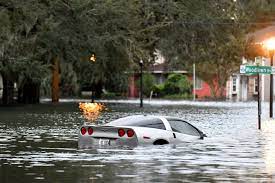
Floods are one of the most destructive forces of nature and can wreak havoc on communities across the globe. A flood is a large-scale overflowing of water onto land that is normally dry. Floods occur when water from heavy rains, melting snow, or overflowing rivers inundates an area, often with devastating results. Flooding can cause massive destruction of property, loss of life and displacement of people in areas it affects. Floods can also cause landslides and contaminate drinking water with pollutants. In addition to their physical impacts, floods can have long-term psychological effects on affected communities. It is important for people living in regions prone to flooding to be prepared by understanding the risks and taking necessary precautions such as creating evacuation plans and preparing emergency supplies.
How to prepare for a flood
Have emergency supplies ready
Listen to the radio or television for updates
Be prepared to turn off electrical appliances and the main power switch
Have enough water available for at least 3 days
Secure pets and outdoor possessions
Stock home with nonperishable items and canned foods
Ensure that the gas tank is full
Secure medical records and essential documents
Know the location of emergency shelters
Do not try to walk or drive through flooded areas
Do not bathe in contaminated water
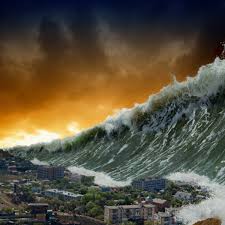
Effects of exposure to contaminated floodwater
Wound infections
Skin rash
Gastrointestinal illness
Tetanus
Leptospirosis
How to manage contact with floodwater
Wash the hands with soap and water
Clean the area with soap and water as soon as possible
Seek medical care for the wounds
Wash contaminated clothing
Use rubber boots and gloves when passing through floodwater
Get the car ready, fill the tank with gas
Make sure the car is ready before the storm hits
Always keep an emergency kit in the car
Landslides
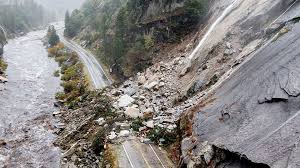
A large amount of water accumulates in the ground, causing a buildup of mud and debris which flows down slopes. Landslides are an all-too-familiar natural disaster, which can cause devastation and destruction in their path. A landslide is the rapid movement of a large mass of soil, rock and other debris down a slope due to gravity. Landslides occur when the material that forms the slope becomes unstable due to saturation from heavy rain, earthquakes, volcanic eruptions or other geological events. Once the material loses its stability and equilibrium, it starts to move downhill rapidly at speeds as fast as 80 kmph (50 mph). Such movements cause immense damage to properties, peoples’ livelihoods and lives. Furthermore, landslides can also trigger floods and mudslides, resulting in further destruction. These disasters have affected many communities worldwide throughout history, making them one of nature’s most destructive forces.
Consequences of landslides
Trauma
Loss of lives
Damage to property
Broken electrical, water, gas, and sewage lines
Blocked road and pathways
Injury to motorists and passengers
Areas prone to landslides
Steep slopes
Altered slopes where the construction of roads took place
Channels along rivers and streams
Ways to protect self from landslides
Keep away from the area
When it comes to staying safe during a landslide, it is important to be aware of the risks and take the appropriate steps to minimize the chances of injury or damage. Knowing the warning signs and being prepared with a plan of action can save your life. Here are some tips to help you stay safe during a landslide:
1. Stay alert and aware of your surroundings. Keep an eye out for any signs of a potential landslide, such as changes in the land, cracks in the ground, or small landslides.
2. If you live in an area prone to landslides, create an emergency plan and discuss it with your family.
3. If you are in an area prone to landslides, avoid building or parking in landslide-prone areas.
4. Make sure your home is built to withstand a landslide.
5. Pay attention to officials and local news reports for updates and evacuation orders.
6. If you are in a landslide-prone area, stay away from the base of steep slopes and any bodies of water near them.
7. If a landslide does occur, move to high ground if possible.
Following these safety tips can help you stay safe during a landslide. Make sure to take the necessary precautions to stay safe and be prepared.

Tornado
Tornadoes are powerful and destructive natural phenomena that can cause serious destruction in a very short period of time. They are created by thunderstorms when warm, moist air collides with cold dry air, creating an updraft that begins to spin around the central point in a funnel-like shape. These columns of rotating air can reach up to 500 miles per hour, easily uprooting trees and destroying buildings in their path. Tornadoes produce loud roaring noises due to the strong winds they generate, which sounds like a freight train or even a jet engine. Their size can range from as small as a few feet across to several kilometers wide. Every year, thousands of tornadoes sweep across North America, causing significant damage and loss of life in some cases. As such, it is important for people to stay informed about tornado activity in their area and make sure they are adequately prepared for any severe weather warnings.
Consequences of tornado
Damage to property
Down powerlines
Loss of lives
How to stay safe during a tornado
Being prepared and knowing how to keep safe
In times of severe weather, it is important to keep yourself and your family safe by following some basic steps to prepare for a tornado. Tornadoes can be unpredictable and devastating, so it is important to be aware of the potential dangers they present and to create a plan to ensure the safety of you and your loved ones. Here are some tips to help you stay safe during a tornado:
-Find out the local tornado warning system and make sure everyone in your home knows what to do if a warning is issued.
-Designate an interior room on the lowest floor of your home as your safe room, and make sure it is free of windows and other objects that can become projectiles.
-Gather emergency supplies such as a flashlight, battery-powered radio, first aid kit, and extra clothing and food in case you lose power or need to evacuate.
-Stay informed by listening to local weather reports and monitoring news sources for warnings.
-If you are in your car, pull over and find a sturdy structure to take shelter in.
By following these tips, you can help ensure that you and your family stay safe during a tornado.
Volcano
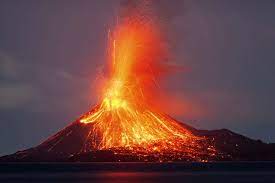
Ash, toxic gases and hot lava or debris emitted from the earth. Volcanoes are awe-inspiring natural phenomena that have captivated human curiosity for thousands of years. Volcanoes form when magma and other materials erupt from inside the Earth’s mantle and solidify on the surface, leaving behind dramatic structures. These eruptions can be violent and destructive, sending hot ash and gas miles into the atmosphere and creating rivers of lava as they flow downhill. Volcanoes also release harmful gases such as carbon dioxide, sulfur dioxide, and hydrochloric acid which can significantly alter the climate and environment in their vicinity. Despite the danger, these areas are surprisingly beautiful – with barren mountain ranges covered in rich soil and lush vegetation sprouting up due to the volcanic activity heating up groundwater. All this makes volcanoes an incredible sight to behold!
Consequences of volcanic eruption
Loss of lives
Damage to property
Skin and respiratory illness
How to prepare for a volcanic eruption
Volcanoes are powerful and unpredictable forces of nature that can cause immense destruction. To stay safe during a volcanic eruption, you should be aware of the potential dangers and plan accordingly. Make sure to keep abreast of any warnings issued by your local government, and evacuate the area if instructed. Additionally, be aware of the potential for ash clouds, which can cause respiratory problems and other health issues. Lastly, stay away from rivers and streams, as these can quickly become dangerous due to volcanic mudflows. By following these precautions, you can ensure your safety during a volcanic eruption.
Know the evacuation protocols
Secure your home
Wildfires
Wildfires are a natural phenomenon that has been occurring in different parts of the world for centuries. These devastating fires are caused by dry conditions, strong winds, and human activities such as agricultural burning, careless campfires, and arson. Wildfires can cause extensive damage to the environment and can be incredibly destructive to life and property. Often times the flames spread quickly, traveling at speeds of up to 14 miles per hour causing widespread destruction in their wake. The intensity of wildfires depends on a variety of factors like fuel load, weather patterns, terrain and even human population densities. Wildfire season usually occurs during dry spells when dead foliage accumulates creating an ideal fuel source for fire to spread rapidly across large regions with catastrophic consequences. To combat these disasters it is important to practice preventative measures such as prescribed burning, fuel management techniques, reducing flammable vegetation near homes and roadsides and raising public awareness through education.
How to manage wildfires
Secure your home against wildfires
Wildfires have been an increasingly common occurrence in many parts of the world. As such, it is important to know how to stay safe if you find yourself in the path of one. To protect yourself and your family, here are some tips to consider:
1. Stay informed – Monitor local media outlets for the latest news and evacuation orders.
2. Create an evacuation plan – If you live in an area prone to wildfires, create an evacuation plan ahead of time. Practice the plan with your family so you will be prepared if a wildfire does occur.
3. Have a “go-bag” – Create a bag of important items that you and your family can easily grab if you have to evacuate. Make sure to include items like medications, important documents, and a change of clothes.
4. Pay attention to smoke – If you see smoke, be alert and take action. Smoke can travel in unpredictable ways, so it’s important to be aware of your surroundings if a wildfire is nearby.
5. Follow evacuation orders – If an evacuation order is issued, leave immediately. Don’t wait to see how close the flames get; leave as soon as possible.
By following these tips, you can help keep yourself and your family safe in the event of a wildfire.
Winter Storm
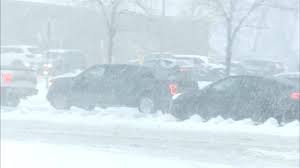
Winter storms are a destructive and powerful force of nature that can wreak havoc on communities in their wake. They are characterized by strong winds, heavy snowfall, blizzards, and frigid temperatures. Winter storms can cause massive power outages and road closures due to hazardous conditions, as well as significant property damage and flooding resulting from ice accumulation. Additionally, winter storms can be detrimental to the health and safety of individuals living in affected areas due to an increased risk of hypothermia and other cold-related illnesses. Although winter storms can be devastating, they also bring beauty and joy through the transformation of the landscape into a something out of a snow globe.
How to stay safe during a winter storm
During the winter months, it’s important to be prepared for extreme cold temperatures and winter storms. While these weather events can be beautiful to watch, it’s important to stay safe and take precautions to protect yourself, your family, and your home. Here is an overview of some of the key steps you can take to stay safe during a winter storm:
Stay informed. Monitor local news and weather forecasts for updates on the storm, and be prepared to adjust your plans accordingly.
Dress appropriately. Wear multiple layers of lightweight clothing and make sure to cover exposed skin.
Be prepared for power outages. Have an emergency kit with items such as flashlights, batteries, and non-perishable foods on hand.
Take steps to protect your home. Cover windows with plastic to prevent drafts and invest in a generator if you’re in an area prone to power outages.
Stay off the roads. Avoid driving in winter storms as much as possible. If you must travel, make sure to have an emergency kit in your car and let someone know your destination and route.
Staying warm
Stay out of the cold
Wear warm clothing
By following these simple steps, you can stay safe and protect yourself and your family during a winter storm.
Disasters often result in loss of life, property damage, displacement of populations, and disruption of essential services. They can also lead to psychological trauma, economic hardship, and environmental degradation. Preparation and mitigation efforts are essential to minimize the impact of disasters and ensure the safety and resilience of affected communities.
Disclaimer: The information provided in this content is for general informational purposes only. It is not intended as medical or healthcare advice, diagnosis, or treatment. Always seek the advice of a qualified healthcare professional with any questions you may have regarding a medical condition or healthcare decisions.
Disaster preparedness Disaster preparedness Disaster preparedness Disaster preparedness Disaster preparedness Disaster preparedness Disaster preparedness Disaster preparedness Disaster preparedness Disaster preparedness Disaster preparedness Disaster preparedness Disaster preparedness Disaster preparedness Disaster preparedness Disaster preparedness Disaster preparedness Disaster preparedness Disaster preparedness Disaster preparedness Disaster preparedness Disaster preparedness Disaster preparedness Disaster preparedness Disaster preparedness Disaster preparedness Disaster preparedness Disaster preparedness Disaster preparedness Disaster preparedness Disaster preparedness Disaster preparedness Disaster preparedness Disaster preparedness Disaster preparedness Disaster preparedness Disaster preparedness Disaster preparedness Disaster preparedness Disaster preparedness Disaster preparedness Disaster preparedness Disaster preparedness Disaster preparedness Disaster preparedness Disaster preparedness Disaster preparedness Disaster preparedness Disaster preparedness Disaster preparedness Disaster preparedness Disaster preparedness Disaster preparedness Disaster preparedness Disaster preparedness Disaster preparedness Disaster preparedness Disaster preparedness Disaster preparedness Disaster preparedness Disaster preparedness Disaster preparedness Disaster preparedness Disaster preparedness Disaster preparedness Disaster preparedness Disaster preparedness Disaster preparedness Disaster preparedness Disaster preparedness Disaster preparedness Disaster preparedness Disaster preparedness Disaster preparedness Disaster preparedness Disaster preparedness

